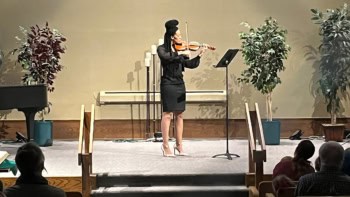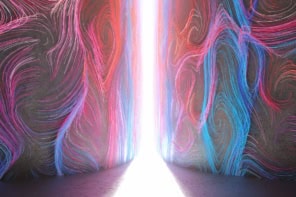
Correlations between the radial positions and radial momenta of entangled pairs of photons have been measured for the first time by physicists in China, Canada and the US.
The work was done Lixiang Chen and colleagues at Xiamen University, the University of Ottawa and University of Rochester – who say that radial entanglement could be used to create better optical tweezers and new quantum technologies.
Entanglement is purely quantum-mechanical phenomenon that allows the properties of two or more photons (or other tiny particles) to be correlated more strongly than allowed by classical physics. Once seen as a quirky aspect of the quantum world, entanglement is now being used to create practical quantum technologies for a range of applications including sensors, computing and cryptography.
Crystal conversion
Entangled pairs of photons can be created by spontaneous parametric down-conversion (SPDC). This involves firing a single photon through a crystal to produce a pair of photons, which remain correlated even when separated by large distances. So far, SPDC has been used to entangle photons in terms of their positions, polarizations, momenta, and orbital angular momenta.
It turns out that photons can also exist in quantum states that resemble rings of light. These states are defined in terms of their radii (radial position) and their radial momentum (whether the ring is expanding or contracting). In their study, Chen’s team demonstrated correlations between these two radial properties in entangled photon pairs.

Energy-time entanglement detected in photons
They did this by first firing a laser at a crystal to produce an entangled photon pair via SPDC. A beam splitter then directs each photon down separate perpendicular arms, which each host a pair of identical spatial light modulators (SLMs). To check for correlations, these SLMs can either function as annular apertures, which only admit photons with a specific radius, or a diffraction gratings, which only allow photons with a specific radial momentum to pass through. Single-photon detectors placed at the end of each arm then confirm whether or not both photons had made it through their respective SLMs. Correlations between signals in the detectors then reveal entanglement through radial properties.
The positive results of the experiment confirmed for the first time that radial positions and radial momenta can indeed be correlated within an entangled photon pair. Chen’s team suggest several potential applications for their results, including optical tweezers made from photons with the same radial momenta. These could be used to guide trapped microscopic particles more precisely. In addition, the confirmation could bring about new capabilities of quantum cryptography and may even offer a new platform for fundamental tests of quantum mechanics.
The research is describes in Physical Review Letters.


